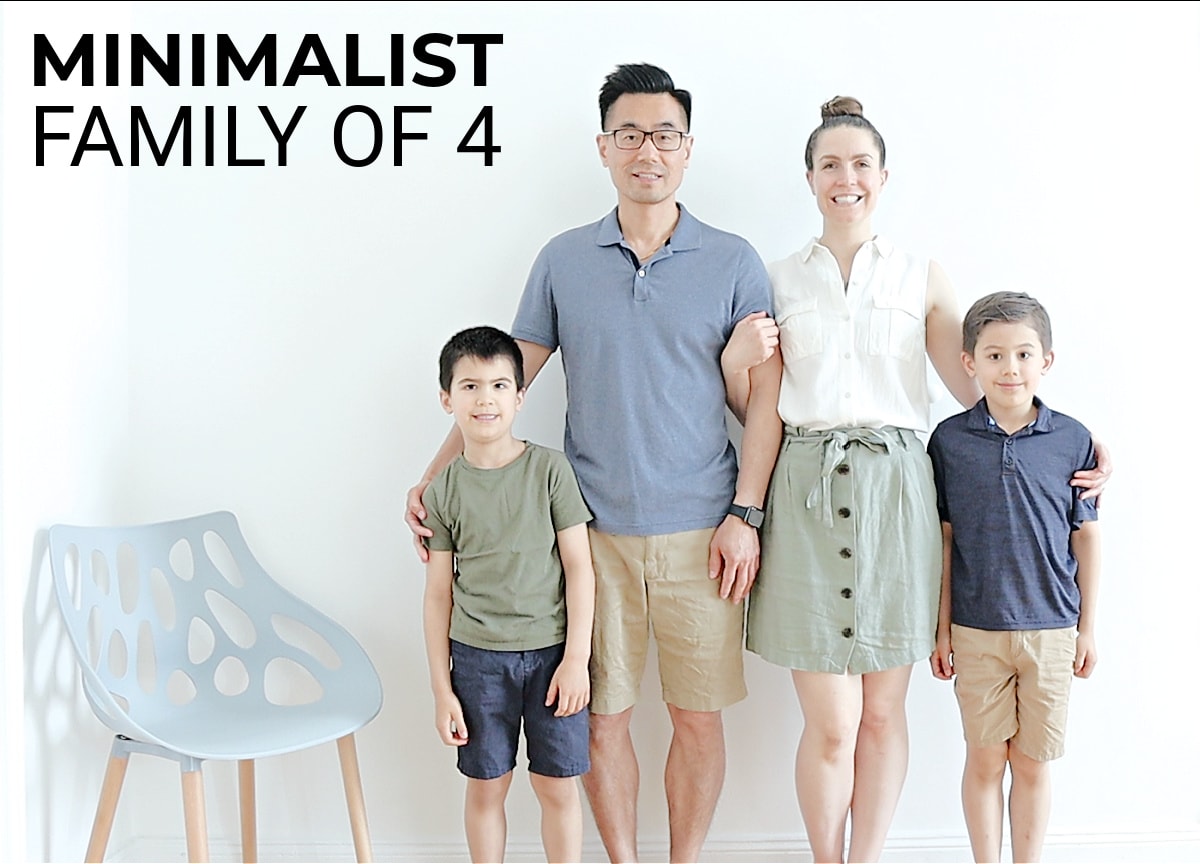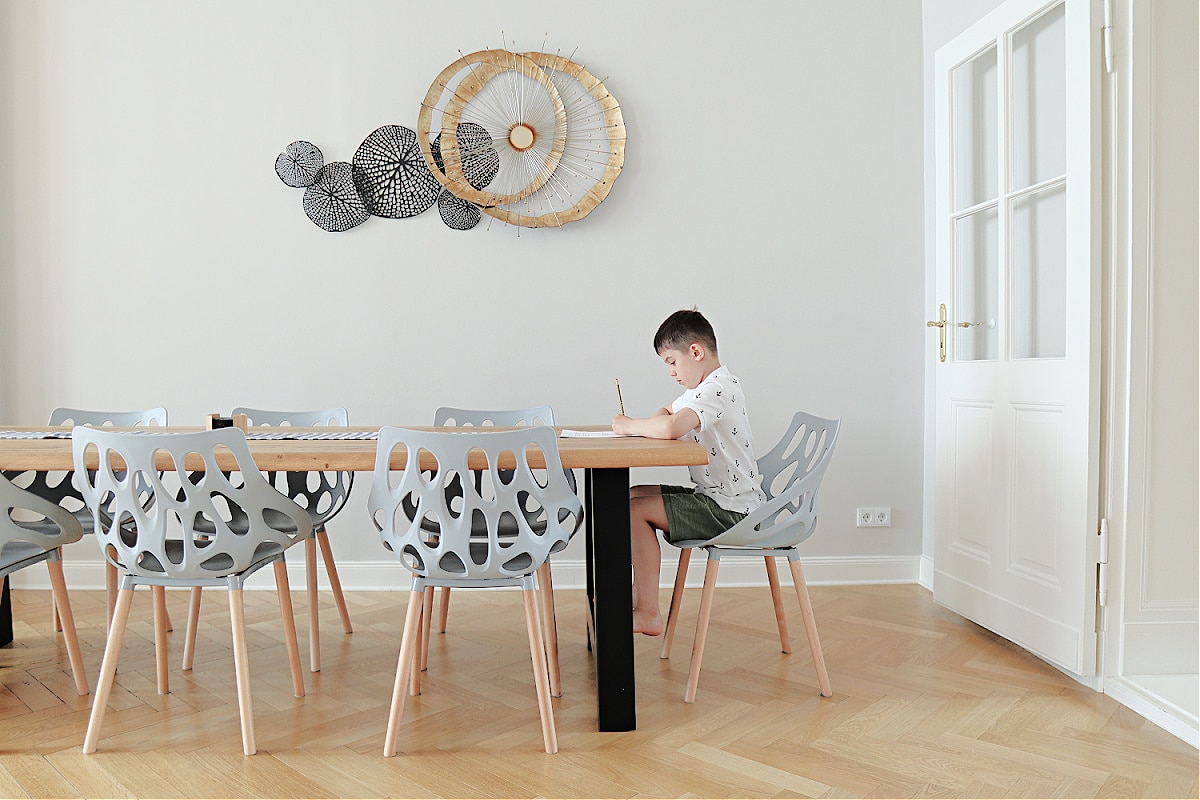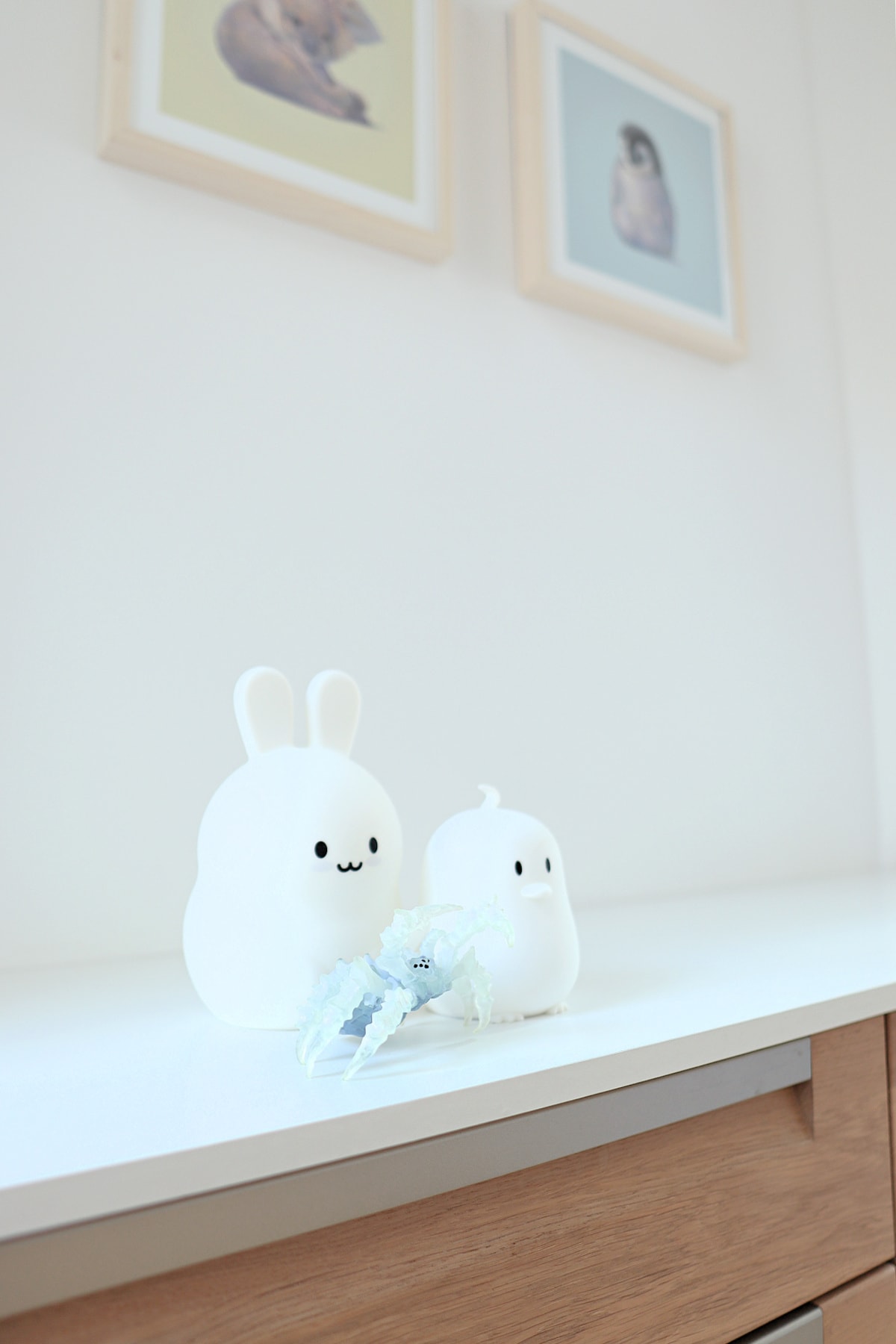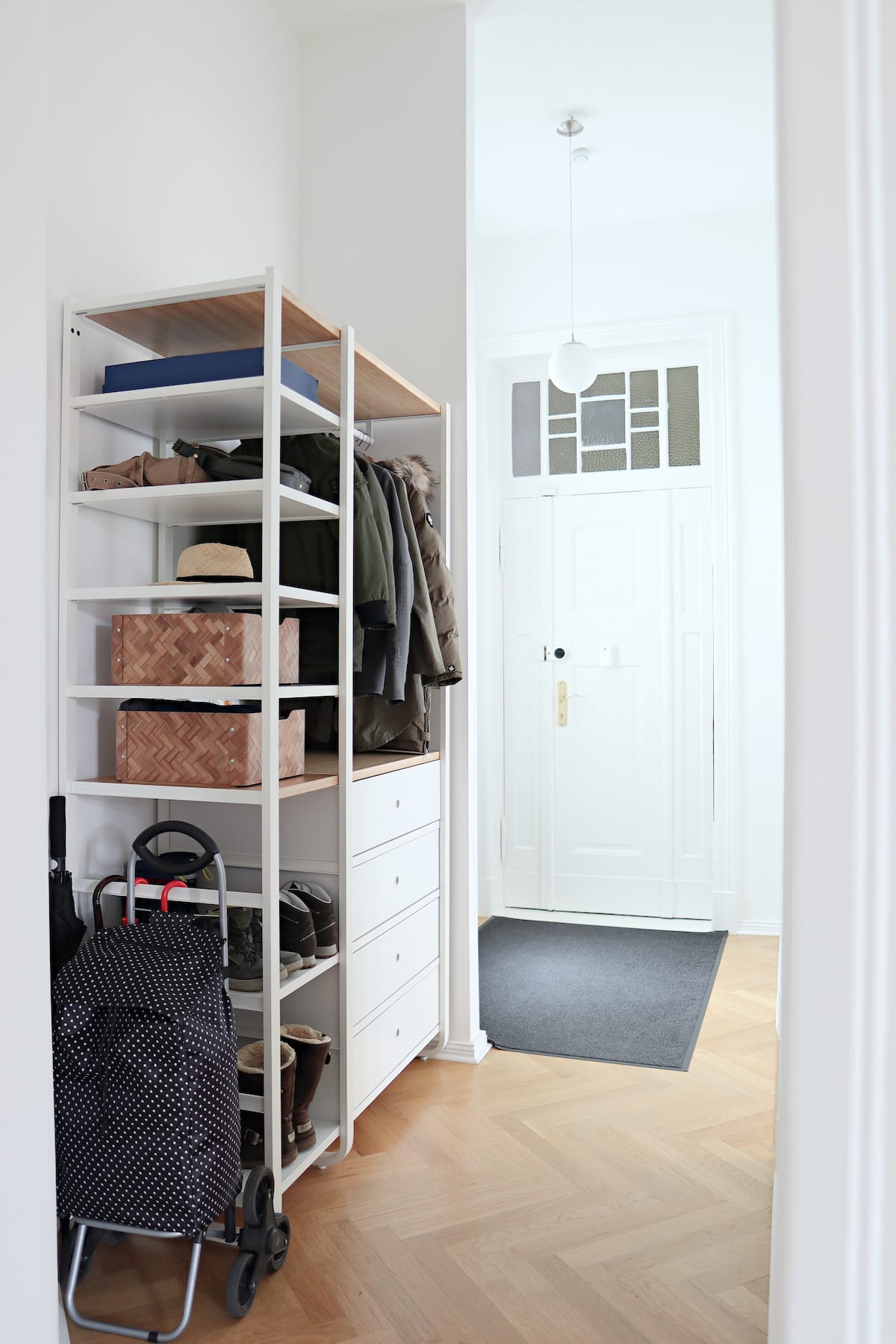Family Minimalism: 20+ Pros, Cons, and Tips for Simple Living as a Family
This post may contain affiliate links for your convenience. That means that if you make a purchase, I will receive a small commission at no extra cost to you. Read more here.
If you’ve landed on this article, chances are you’re dreaming of a simpler and tidier life as a minimalist family. But then, you take one look at your child’s playroom and the stacks and stacks of toys or your husband’s overflowing collection of ratty tees, and you begin to think it’s just a pipe dream that will never happen. I’m here to tell you family minimalism is not only possible – it’s amazing!
Trust me, as a former emotional hoarder who had to declutter 30 years of stuff, I know how tough it can be to conquer the clutter.
After all, I have two curious and very active boys and a husband that was always working and never around to help, so it felt like I was constantly fighting a battle against mess and stress – a LOSING battle!
Some days it felt like I would never be done and that my home would always be cluttered. But just as Nelson Mandela famously said,
“It always seems impossible until it’s done.”
Years later, I now can firmly say that becoming a minimalist family was one of the best decisions we ever made. When I thought about the life I wanted us to lead as a family, I knew that it was time to turn things around.

What is Family Minimalism?
Minimalism has taken the world by storm!
While I love this new trend toward a simpler life, so much minimalism content is directed at those who are single or don’t have children. Let’s be honest: as a family, you face even more challenges in becoming minimalist.
So kudos to you for wanting to try and turn that daydream into a reality. You’re an inspiration, even if you don’t know where to start.
Before we get into all the ways you can become a minimalist family, it’s a good idea to set expectations. What exactly is minimalism? A quick Google or Pinterest search will show a white home with nothing but a plant and two pieces of furniture.
In reality, the average minimalist isn’t as extreme as the media makes them out to be – this is what extreme minimalism looks like, and trust me when I say it’s not for everyone!
You’re not living in an empty home or a tiny house on wheels. You don’t have to give up everything that you love. In fact, the idea is all about surrounding yourself with the things you love most. (You can read more about the difference between minimalist living versus the aesthetic here.)
By removing the excess and non-essential items from your life, you’re surrounding yourself with the things that have importance to you. Ideally, everything you keep should hold value in your eyes.
You can still have possessions, and you can still buy new things. Brand new things! Instead of buying things whenever you feel like it, you’re being more mindful about when to bring new things into your life and home.
All in all, it’s about simplifying your home and your life. Minimalism gives you more space and time for the things you value the most. In this regard, minimalism becomes very personal. It’s going to look different for everyone!

Pros & Cons of Minimalist Family Life
Now that you see “minimalism” doesn’t have to mean living in a sparse white room with no possessions let’s chat about the pros and cons of becoming a minimalist family.
After 6+ years of decluttering and living minimally, our minimalist family of 4 has been there, done that, and seen all of the benefits of family minimalism, as well as faced obstacles and struggles – and overcame them!
Family minimalism pros
Here are just a few of the many perks we’ve experienced as a minimalist family; you can read more about what science has to say to back up these claims in this post about the benefits of being a minimalist.
- Less cleaning. I had to put this at the top because it’s one of my all-time favorite minimalism benefits. When you have fewer things, you get to spend less time picking them up and cleaning your home.
- Save money. Who couldn’t use a little bit more money in their pocket at the end of the month? Little things certainly add up, and you’ll be amazed at the savings!
- Teach children the value of possessions. When our homes are flooded with things, our kids don’t truly appreciate all the stuff they have. Imagine how much more enjoyable they will find playtime when they are surrounded by their 3 all-time favorite toys rather than a slew of ones they aren’t really interested in.
- Save time. Saving time is a major part of minimalism. You’ll be amazed at how much your time frees up when you aren’t looking for lost items or spending all your evenings cleaning the playroom yet again. By letting go of the physical things in your life, you should have more time to do the things you love.
- Simplify your life. So far, we’ve focused a ton on items and the physical parts of being a minimalist. But the other aspect of it is how much it simplifies your life. Every aspect of it. Your mind and your home will feel less cluttered, and tasks that may have seemed daunting will become simpler.

Family minimalism Cons
When it comes to family minimalism cons, some problems are real, and others are more societal or perceptual. Here’s an honest look at the potential downsides of family minimalism, so you go into it with your eyes wide open.
- It’s harder with kids. This is simple math; the more people you have in a home, the more difficult it is to maintain a clutter-free life. No matter how minimalist you are, babies and children still require things like clothing, food, bedding, and even TOYS. That being said, minimalism with kids is not only possible but also incredibly rewarding.
- Emptiness and boredom. Many people are afraid that a minimalist lifestyle will be too boring and that minimalists just sit around in empty rooms and twiddle their thumbs. While it’s true that minimalists have less stuff than the average Joe, that usually means they have more free time to do stuff they actually enjoy. And let’s face it, kids will complain about being bored no matter if they have ten or ten thousand toys. In fact, studies have shown that kids with fewer toys are happier, more creative, and play for longer than kids who have too many toys.
- Judgment. This is a definite drawback for many people. Minimalist living is countercultural, and any time you do something that goes against the grain, you’re going to cheese people off. You might get pushback from grandparents who want to shower their grandchildren – your kids – with toys or friends who come at you with comments about how your home is too clean or empty or has no character. Remember, those people will judge you just as much for having a tidy home as they would a messy home, so you decide which you prefer.
- It feels like a cult. Minimalists love to talk about how life-changing minimalism can be! Anytime you get people who are super passionate about a particular topic, outsiders might feel that it’s a little too cult-y for their taste. Rest assured, minimalism is not a cult. It’s okay to respectfully share your love of minimalism with friends and family, but don’t push your beliefs onto them, just as you don’t wouldn’t want them pushing their clutter-loving practices onto you.
- Too many rules. On the surface, it might seem like minimalism has too many rules, such as owning less than 100 items or keeping your surfaces clean all the time. While it’s true that there are plenty of helpful minimalism rules, such as the one-in-one-out rule, you can think of those rules as more of a guideline. It’s all about finding the right balance in your life!
READ MORE: What is Minimalism? 10 Simple Principles for Beginners to Start Living Minimally

How to Live a Simple Life as a Minimalist Family
These tips are perfect for helping get you started.
Hopefully, by the end, becoming a minimalist family will appear less daunting and very attainable. Not only will it be an immediate lifestyle change, but it will have a meaningful impact on how you view your possessions and can simplify your life.
If you’re on board and ready to get started, you can also grab this free 10-page decluttering workbook to help you start simplifying.
1. Introduce Family Minimalism to Your Kids
Minimalism is a big concept for the little ones to grasp, but that doesn’t mean they can’t! As you’re going through your family minimalism journey, let your kids know what’s going on. With curious minds, they are bound to ask questions as they see you changing your own habits.
Encourage those questions and feed their curiosity. And if they want to get involved, let them! Eventually, they will participate, so if they show interest in minimalism now, embrace it.
Since minimalism is a broad concept, introduce it to them slowly. You can try showing it to them in mediums they know best.
Tidying Up with Marie Kondo on Netflix or videos from popular minimalist mom channels like the ones in this list can be a fun watch with the family. Little ones can even enjoy picture books about cleaning and decluttering. Try to make it fun and exciting rather than a chore.

2. Talk about why you want to be a minimalist family
Finding your “why” is one of the best things you can do as a minimalist family. When times get tough, and things get hectic, it’s your why that will keep you moving forward.
Think about the reasons that you want to practice family minimalism. As parents, your why might be different from your children’s and that is okay.
Sit down together and talk about what’s most important to you as a family. Ask yourselves and your children what do you want less of and what do you want more of in your lives? Maybe you want less fighting about chores and more time to go hiking or swimming.
You can even write it down, asking questions like:
- What’s the most important thing to me?
- What are my favorite things? Favorite activities?
- What’s great about our life and home? What could we be doing better?
- What do you want more of and what do you want less of in our home and life?
- Why do we want to become a minimalist family?
- How can minimalism help us lead a happier and better life?
- If you had to leave home with a single backpack or suitcase, what would you take?
This last question is a topic that is near and dear to my heart right now because refugees have started coming to our area (Germany) after losing their homes and it’s really put life and what’s important into perspective. Read more about how minimalism can help in crisis situations here.
3. Embrace your inner minimalist mom
Kids take after their parents, so it’s time to lead by example!
If you want your kids to live a more tidy and clutter-free life under family minimalism, start with your stuff! Begin your journey to family minimalism by beginning in your own personal space with decluttering.
I always recommend that you start with the things that aren’t as important to you. AKA none of the sentimental items! Here is a good list of decluttering questions and things to get rid of if you’re still not sure where to start.
Starting off simple will get you used to the practice of getting rid of items. That way, by the time you teach it to your kids, you already know how to navigate the emotions that come with saying goodbye to stuff.
As you’re going through your items, get your kids to watch or be in the same room as you. This will encourage that curiosity. Once you’ve moved away from your more personal items, get your kids to help you. They can help organize items, put things in the bin, or even be a part of the decision-making to keep or get rid of items.
4. Share the responsibility
The whole house should be a part of the decluttering process. Yes, even (and especially) your spouse or partner He or she dwells in the space just as much as you do and therefore should help with the decluttering. And they most definitely should be going through their own stuff (but they may need encouragement to finally get rid of those dingy old sweatpants from college).
Everyone needs to be in charge of their own possessions.
This means your children need to be involved in going through all of their items. For every toy, sock, and rubber ducky, they should decide whether to keep it or not.
While adults should not start with the sentimental stuff, kids should start with their favorites. In this case, this allows them to be able to compare their feelings towards other items. If they have a go-to stuffed animal, they can compare all the other stuffed animals to it to see whether or not they should keep it. It makes the connection to items much more digestible for kids.
Of course, kids will need help. Go through with them and give them gentle nudges and reminders about their items. The experience of decluttering should be a positive one. Getting rid of things is never a punishment.
While going through things, be sure to mention all the positives. With fewer things, you have more time together. Donating a toy they no longer use means someone else will get to enjoy it. They’ll be able to find their favorite toys much easier. Nothing will ever get lost!
5. Set designated clean-up or reset times
Most minimalist families have set times for tidying up in their daily schedule. Decluttering and being a minimalist isn’t a one-time job. Yes, it begins with going through the whole house and doing a huge reset. But then it’s all about keeping your house in its newfound glory.
Afterwards, the new practices and systems in place will make things easier going forward. From now on, quick and simple cleanups should be all that’s required.
For the little ones, having a daily schedule is very useful. Routine is very good for children and helps them become more independent. If you dedicate a time of the day for cleaning and tidying up and make sure it’s the same time every day, they will come to expect it. They might even do it on their own if they know how to follow the schedule!
The best time of the day will look different for everyone. You may even have a couple of times of the day such as in the morning to make the bed and tidy dirty clothes, and before bed to clean up toys from the day.
Besides the kids, you and your partner should also have your own time to do the adult cleaning. This means cleaning toilets, doing laundry, and all the fun adult-only chores.
6. Give each item its own spot
If I could give any mom a must-follow tip for family minimalism, it would be this one. Everything in the house needs to have a spot. And I mean absolutely everything. You should be able to point at any item in the house and know exactly where it belongs, as should any other member of your family.
This will help you immensely by cutting down cleaning and tidying up times. No more wondering where to put things, stuffing them in the wrong place, and making a further mess. Likewise, you’ll be able to find everything instantly. No more dumping out the toy box to find that one item!
This may mean investing in organization systems like kid-friendly shelves, step ladders, boxes, bins, and labels. Trust me, they’re worth it!
Make sure your kids know where all of their items belong. Everything that belongs to them needs to be easily accessible. They need to reach things easier to take them out without making a mess, as well as be able to put it back where it belongs.
At first, you may have to do reminders but eventually, they’ll get the hang of it. The day they clean up after themselves without being asked will go down in the history books!

7. Practice mindful shopping
It’s a lot harder to part with clutter once it enters your home, so why not nip this clutter-causing habit in the bud?
Practicing mindful shopping can help reduce impulse spending and retail therapy, which not only saves you time and money but also energy and time that you would have to spend decluttering and re-homing unwanted items later.
Because let’s face it – you probably didn’t want or need that thing!
Here are a few tips for mindful shopping:
- Make a list before you go shopping and stick to it!
- If you see something you want, wait 24 hours or up to 30 days before purchasing it. This will help you to determine if it’s a true want or just an impulse buy.
- Ask yourself where that thing will “live” in your home.
8. One In One Out
Another golden rule for family minimalism is the one-in-one-out rule. This is one of the easiest mindsets to hold onto whenever you’re looking to buy new items. The rule essentially means that for every item you bring into the house, it’s time to get rid of an item.
If you get a new book, donate one. If you get a new phone, recycle the old one. A new top? Donate an old one you no longer use. You can also swap across categories once you get really minimal.
The same goes for your kids’ items.
Since kids grow quickly, you’ll find this rule especially helpful in getting rid of clothing that quickly becomes too small for them.
Kids can also be part of the experience. Whenever you take them shopping, let them know what you’re shopping for. Sharing your shopping list with your kids lets them know what you’re out looking for.
Just like adults, when kids have a solid idea of what they are shopping for, they will be more focused and less likely to get distracted and ask for a ton of riff-raff.
9. Prioritize experiences over things
One of the best things about family minimalism is that it allows you to focus on experiences rather than things.
When I think back to my childhood, I don’t remember what presents I got when I was nine years old, but I remember the family trip we took to Disneyland.
I bet you are the same way – go on, give it a try! If you’re like most people, it’s the memories of fun activities that stand out rather than the stuff that you bought or owned.
Rather than spending your hard-earned money on material items, you can put that money towards family vacations, days out, and other memorable experiences – here are over 50 amazing ideas for kids!
“Collect memories, not objects.”
10. Gifts and Holidays
I get asked about this topic so often that I had to devote an entire section to it!
Have you ever been to a birthday party where a child opens up so many gifts they lose their magic? On the first gift, their eyes sparkle, but by the time they open the last one, they’ve forgotten all about the first one.
This is exactly what we want to avoid. Practicing minimalism at Christmas, birthdays, and other special events is possible!
If possible, try to ask family members and friends to keep gifts to a minimum. They can also gift experiences or ask for items you know they need. This will help prevent the clutter from creeping up, and the overwhelm of too many items from happening.
This doesn’t make the holiday any less magical. Trust me, your kids won’t notice or care about the number of gifts they get! The thought and love will resonate, even at a young age.
READ MORE: 37 Non-Toy Gifts for Kids to Ignite Their Inner Genius and Creativity
11. Communicate with each other
Last but not least, embrace the minimalist family mindset. A major part of minimalism stems from encouraging good habits.
By minimalizing the items in your home, you’ll find that you have a deeper appreciation for your family and the life you’ve built around you. You’ll have more time to spend together by removing the redundant items and nonsense.
Minimalism truly strengthens relationships with those around you as you value what’s truly important…family!
You’ll also find yourself filled with more gratitude. Since everything that surrounds you is something you value and love, you’re going to be much more thankful for it. And every time it’s due to say goodbye to an item, you know it has served its purpose well, and you can let it go with joy and thankfulness.
Being a minimalist should always be a positive experience.
If you ever feel like getting rid of things is a punishment or feel mournful over what you’ve lost, then you’re not doing minimalism right! Always do what feels right for you and your family, no matter what the “pros” say.
Before & AFter Family Minimalism YouTube Video
Final Thoughts on Family Minimalism
That’s it on family minimalism! Remember to take your time implementing these practices. Changes like these are large and will take time.
But slowly, you’ll see the results both around your home and in your mind. And it truly will be life-changing!
Let me know which of these tips you found the most helpful in the comments down below, or feel free to share your own thoughts and experiences on family minimalism. 🙂

Thank you for this post, it’s a really important matter for me. This part of minimalism is definitely something I need to work on. I’ve been on my minimalist journey for about two years now, but there’s still so much to be done. My daughters share a tiny bedroom, so downsizing toys and other stuff was obvious for us. I started doing the toy rotation, I put some of the toys in the basement to see if my older daughter would remember them after a while, it turned out she remembers most of them xD, but now at least she’s not that overwhelmed by the amount of toys in her room, but I think there are still too many things.
Like you said, it’s a journey, Linka! I’m cheering you on as you find that right balance for your family. 🙂
It is definitely hard to be a minimalist when the others in your house love their clutter! I can finds all sorts of things for others to declutter- haha!
I’m not a minimalist (yet) but I am trying to be more thoughtful and choosy with the things I own. I just discovered your youtube channel and blog and it’s been very helpful. I just decided to part with over 50 dishes from my collection this past weekend!
Hi Nicole, I’m so glad you found me! It’s all about finding the right balance in your own life. 🙂 Also, took a look at your blog and loved the fabric scrap pouf so much! I’m a big fan of repurposing items around the home; I turned an old bento box into 1) photo storage and 2) bathroom drawer storage. Thanks for reading and best of luck with your journey, wherever it takes you.
I really enjoyed reading this post! I have been into minimalism for a while and now my husband is even getting more enthusiastic about it! We recently had our first baby so we have put a ton of thought of how we want to raise her and our future children. We love the idea of minimalism, especially as a family. Stuff doesn’t last, but relationships do – that is where we need to be focusing our time and energy. Thanks for these tips!:)
Love that, thanks for reading Mindy. 🙂